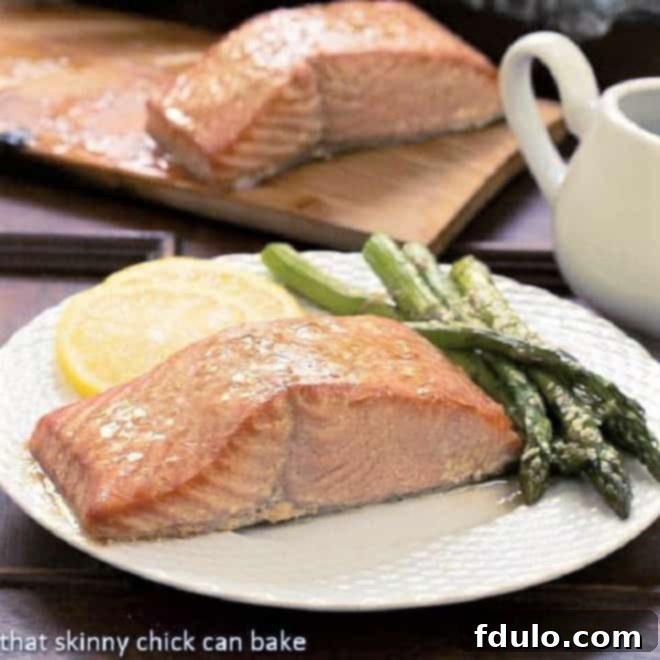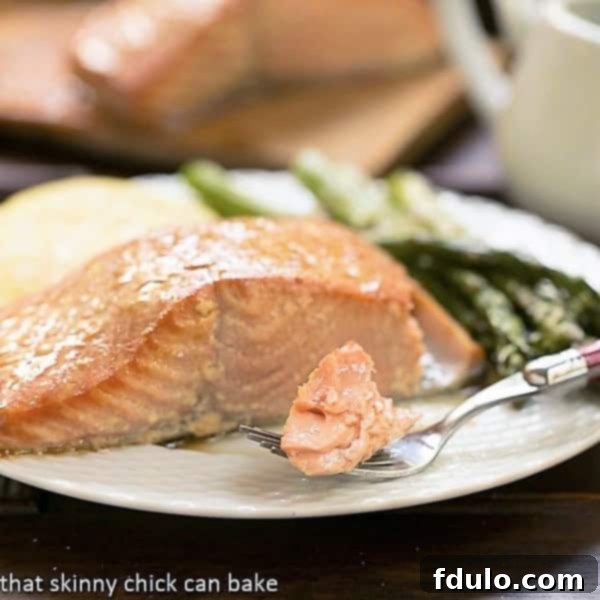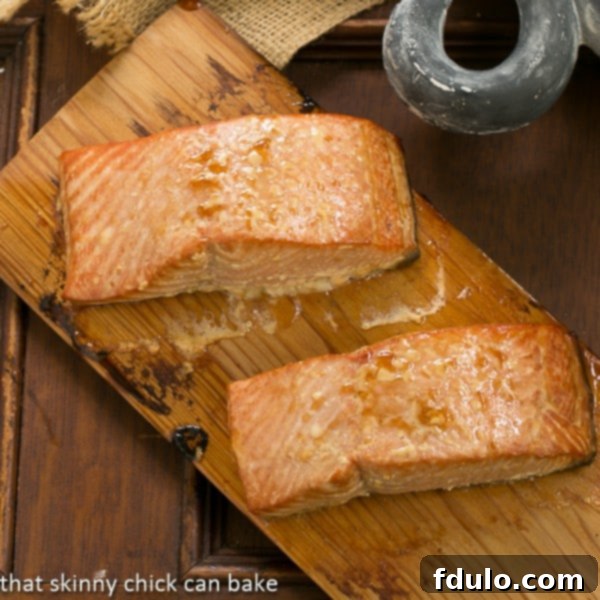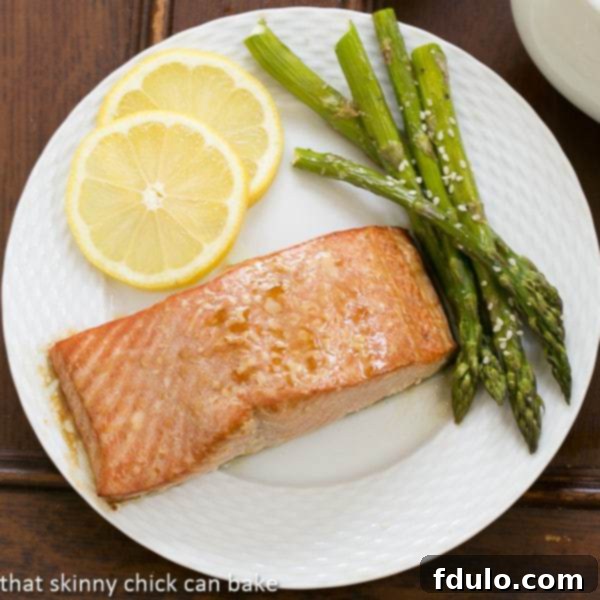Discover the secret to perfectly cooked, irresistibly flavorful salmon with this simple yet sophisticated Cedar Plank Salmon recipe. Infused with a complex aroma and taste, it’s guaranteed to elevate your grilling experience.
The Ultimate Guide to Grilling Cedar Plank Salmon: Flavor, Moisture, and Perfection
For many years, Plank Grilling Salmon has been a cornerstone of our outdoor cooking adventures, fundamentally transforming our approach to fish preparation. More than just a cooking method, it’s an experience that marries the robust char of a charcoal grill with the delicate, aromatic essence of cedar. Imagine the comforting scent of a cedar closet, now picture that natural fragrance melding with succulent salmon – that’s the magic of Grilled Cedar Plank Salmon. This technique doesn’t just cook fish; it imbues it with a secondary layer of smoky, spicy, and subtly sweet notes that are simply unparalleled.

Mastering Cedar Plank Salmon: A Simple Recipe for Complex Flavors
The journey to perfecting Cedar Planked Salmon began years ago with a basic recipe found tucked inside a package of cedar planks. Its simplicity was deceptive; the cedar imparted such a profound complexity to the salmon’s natural flavor that it quickly became a staple. This recipe, updated and refined over time, relies on easily accessible pantry ingredients for its incredible marinade, making it a joy to prepare.
Originally, the recipe suggested simmering the used marinade as a glaze. However, by doubling the marinade ingredients, we can set aside half for reduction, creating a fresh, safe, and intensely flavorful drizzle for the cooked salmon. This method ensures maximum flavor while maintaining food safety. The result is a quick, healthy, and utterly delicious way to enjoy grilled salmon that feels gourmet without the fuss.
What Exactly is a Cedar Plank? And Why Use It for Grilling?
While often found in grocery stores, particularly during grilling season, many home cooks might not be familiar with cedar planks. These remarkable culinary tools are thin slabs of durable, fragrant wood, typically sourced from coniferous trees like Western Red Cedar. Revered for their natural insect-repelling properties, cedar planks are also fantastic for cooking. The wood imparts a faint, woodsy flavor that evokes the pristine scent of pine forests found at higher elevations in Colorado—a truly unique and natural enhancement to your food.
The beauty of cedar plank grilling lies in its ability to infuse a delicate smokiness and moisture into your food. When soaked and heated, the plank creates a steam bath, gently cooking the salmon while preventing it from drying out. This steamy environment, coupled with the aromatic cedar, results in incredibly moist and flavorful fish. While grilling is popular, these planks are equally versatile in the oven, simply follow the soaking instructions and place the salmon-topped plank into a preheated oven for a similar aromatic effect.
Choosing and Caring for Your Cedar Planks
When selecting cedar planks, always opt for untreated, culinary-grade Western Red Cedar. Avoid any wood that has been chemically treated, as these chemicals can be harmful when ingested. Planks come in various sizes and thicknesses; choose one that comfortably fits your grill and your salmon fillets. Thicker planks tend to last longer and impart more flavor.
Can Cedar Planks Be Reused? Maximizing Your Culinary Investment
One common question about cedar planks is whether they can be reused. The answer is often yes, provided they haven’t been excessively charred. Less expensive, thinner planks are often designed for single use. However, if only the bottom surface is lightly blackened, a plank might be suitable for a second use. For optimal flavor and safety, always inspect your plank carefully. If it’s heavily charred, brittle, or difficult to clean, it’s best to discard it. If you do plan to reuse a plank, it is crucial to soak it thoroughly again, just as you would a new one.
After use, gently scrub the plank with warm water and a brush to remove any food residue. Avoid using soap, as it can be absorbed by the wood and impart an undesirable flavor during future cooks. Allow the plank to air dry completely before storing it in a cool, dry place.
The Essential First Step: How to Properly Soak a Cedar Plank
Soaking your cedar plank is the most critical step to ensure a successful grilling experience. This process serves two main purposes: it prevents the plank from catching fire on the grill and it allows the wood to release steam, which infuses your food with that signature woodsy flavor and keeps it moist. A minimum soaking time of 60 minutes in cold water is recommended, but 2-4 hours is ideal for a more pronounced flavor and maximum moisture. Make sure the plank is fully submerged; you may need to weigh it down with a heavy object like a plate or a brick to keep it from floating.
PRO-Tip: Elevate your flavor profile by experimenting with different soaking liquids. Instead of plain water, consider using salted water, white wine, apple cider, or even sake. Each liquid will impart its own subtle nuances to the salmon, adding another layer of complexity to your dish.
Crafting the Perfect Marinade for Cedar Plank Salmon
The soy-based marinade used in this recipe is a harmonious blend of pantry staples, with just a touch of fresh lemon juice for brightness. It’s designed to complement the cedar’s aroma without overpowering the delicate flavor of the salmon. The combination of soy sauce, dry white wine, brown sugar, ginger, and black pepper creates a marinade that is savory, subtly sweet, and aromatic. The small amount of fresh lemon juice cuts through the richness and adds a vibrant zest.
A crucial element of this recipe is reserving half of the marinade before the salmon is introduced. This reserved portion is later reduced into a luscious glaze, creating a concentrated burst of flavor to drizzle over the cooked fish. Skipping this step would mean missing out on an incredible depth of taste, so be sure to include it in your preparation!

Step-by-Step Guide: How to Grill Cedar Plank Salmon to Perfection
Grilling salmon on a cedar plank is an accessible technique that yields extraordinary results. Follow these steps for a truly memorable meal:
- Soak Your Plank: Begin by soaking your cedar plank in cold water for at least 60 minutes. As mentioned, for enhanced flavor, consider using wine, cider, or even sake as your soaking liquid. This hydration is key to preventing the plank from igniting and to generating the steam that cooks and flavors the fish.
- Prepare Your Grill: Preheat your grill to medium-high heat (around 375-400°F or 190-200°C). Once hot, place the soaked plank directly on the grill grates for 2-3 minutes per side, or until it begins to lightly smoke and char. This preheating step helps activate the cedar’s aromatic oils and ensures even cooking.
- Marinate the Salmon: While the plank is soaking and the grill is heating, place your salmon fillets in the prepared marinade. Allow them to marinate for 20-30 minutes. Remember to reserve half of the marinade for your glaze!
- Grill the Salmon: Carefully place the marinated salmon fillets, skin-side down, onto the preheated cedar plank. Close the grill lid to trap the smoke and steam. Cook for approximately 10-15 minutes.
- Check for Doneness: Cooking time will vary based on the thickness of your salmon fillets and the specific temperature of your grill. The FDA recommends cooking salmon to an internal temperature of 145°F (63°C). For a moister, more tender result, especially with fatty farmed salmon, many chefs prefer to pull it off the grill at 125°F (52°C) and allow it to rest. Wild salmon, being leaner, often benefits from being cooked to an even lower temperature of 120°F (49°C) for the moistest texture. Use an instant-read thermometer inserted into the thickest part of the fillet to ensure it reaches your desired doneness.
- Rest the Salmon: Once cooked, remove the plank with the salmon from the grill and let the fish rest, covered lightly, for 5-10 minutes. This allows the juices to redistribute, resulting in a more succulent fillet.
- Reduce the Glaze: While the salmon is grilling, pour the reserved marinade into a small saucepan and bring it to a simmer over medium heat. Reduce the liquid by half, stirring occasionally, until it thickens into a flavorful glaze. This reduction process concentrates the flavors and, importantly, boils away any raw juices from the fish, ensuring it is safe to consume.
- Serve and Enjoy: Transfer the cedar plank salmon to a serving platter. Drizzle generously with the reduced glaze just before serving. Garnish with fresh herbs like parsley or dill, and a lemon wedge for an elegant presentation.

Recommended Seafood Recipes to Explore Next:
- Crispy Coconut Shrimp from Creative Culinary
- Soft Shell Salmon Tacos with Mango Salsa
- Spicy Shrimp Fajitas
- Prosciutto Wrapped Shrimp
- Homemade Tuna Noodle Casserole from Scratch
- Plus, explore over 75 more delightful Seafood Recipes!
This recipe was originally shared in September 2010. The photos and text were comprehensively updated and revised in 2019 to provide a more detailed and engaging guide.

Cedar Planked Salmon
10 minutes
10 minutes
20 minutes
4 servings
A simple marinade and cooking technique for salmon that imparts a complex, irresistible flavor, ensuring a moist and aromatic dish every time.
Ingredients
- 4 tablespoons vegetable oil
- 2 tablespoons soy sauce
- 6 tablespoons dry white wine (e.g., Sauvignon Blanc)
- 1 teaspoon fresh grated ginger
- 2 tablespoons brown sugar, packed
- Freshly ground black pepper, to taste
- ½ teaspoon fresh lemon juice
- 4 salmon fillets (about 6-8 oz each), skin on or off
- 1-2 cedar planks, soaked for at least 60 minutes
Instructions
- In a medium bowl, combine the vegetable oil, soy sauce, white wine, ginger, brown sugar, black pepper, and lemon juice. Whisk until well combined. Reserve half of this marinade in a separate small saucepan for later use as a glaze.
- Place the salmon fillets in the remaining marinade, ensuring they are well coated. Marinate for 20-30 minutes at room temperature, or up to an hour in the refrigerator.
- While the salmon marinates, preheat your grill to medium-high heat (approx. 375-400°F / 190-200°C). Place the soaked cedar plank directly on the grill grates for 2-3 minutes per side, or until it starts to lightly smoke and char. This activates the plank’s flavors.
- Carefully place the marinated salmon fillets, skin side down if applicable, onto the preheated cedar plank. Close the grill lid. Grill for approximately 8-12 minutes, or until the salmon reaches your desired doneness. Use an instant-read thermometer to check the internal temperature in the thickest part of the fillet.
- While the salmon is cooking, take the reserved marinade and simmer it in the saucepan over medium heat. Reduce by half, stirring occasionally, until it forms a slightly thickened glaze. This step is crucial for both flavor concentration and food safety.
- Once the salmon is cooked, carefully remove the plank with the salmon from the grill. Transfer the salmon to a serving platter and drizzle generously with the reduced glaze before serving. Serve immediately and enjoy the complex flavors!
Notes
Cook to your desired doneness. While the Alaskan Salmon Company recommends 145° F, many prefer a slightly lower temperature (120-125°F) for a moister result, especially for farmed salmon. Wild salmon often benefits from being cooked to 120°F for optimal tenderness.
Nutrition Information:
Yield:
4
Serving Size:
1
Amount Per Serving:
Calories: 633Total Fat: 42gSaturated Fat: 6gTrans Fat: 0gUnsaturated Fat: 32gCholesterol: 143mgSodium: 579mgCarbohydrates: 7gFiber: 0gSugar: 6gProtein: 51g
How much did you love this recipe?
Please leave a comment on the blog or share a photo on Pinterest
